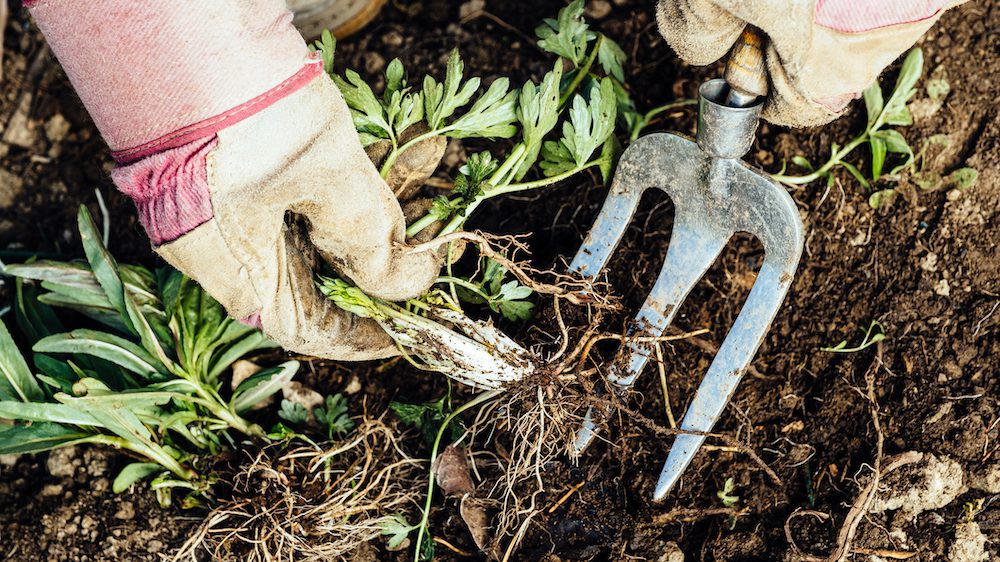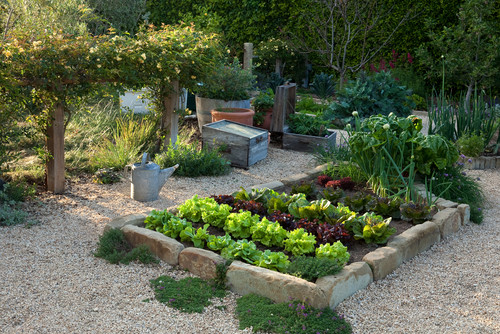
Getty Images
During the dark days of the COVID-19 pandemic, growing plants and vegetables felt both soothing and life-affirming. It’s no wonder many people became first-time gardeners. But now that life is getting somewhat back to normal, tending those plants may have fallen by the wayside. If your garden looks like it needs some TLC this year, there’s still hope!
“Don’t be discouraged if your garden doesn’t look great right now,” says Erin Schanen, Troy-Bilt garden expert, master garden volunteer, and creator of The Impatient Gardener blog and YouTube channel. In many cases, she says, your neglected plants can be nursed back to health—but it won’t happen overnight.
If you’re game to revive your feeble flora into a thriving garden once more, read on. Here are some of the vital steps you should take.
Clear out your flower beds
Out with the old, and then in with the new, say garden experts.
“Before planting new flowers, shrubs, or vegetables, it’s important to first clear out any fall and winter debris that made its way in,” says Bailey Carson, home expert at Angi, the home improvement recommendation site.
“Clear out leaves, needles, pine cones, and weeds, in addition to any other unwanted rubbish like acorns, twigs, and moldy mulch,” adds Carson. It’s important to start off your spring garden with a clean slate—even if you have just a container garden.
And don’t forget weeds, says Schanen. The longer you wait to tackle them, the bigger the job will be, so don’t delay.
“Dig them out with a soil knife, trowel, or garden fork so you remove the roots as well, and shake off any soil,” Schanen says.
Re-edge the area
Edging sounds more difficult than it is, but it can make a huge difference in a garden.
“Few things can make a garden come together better than a fresh, tidy edge,” says Schanen. “If you used some kind of edging material, make sure it’s well-weeded and level. If you used stones or bricks, this might mean removing them, tidying up, and replacing them.”
Carson says edging can also help to define the division between your landscape and your lawn.
“To clean up last year’s edging, a pair of edging shears might be all you need. Once this is cleaned up, you’ll be amazed at the difference,” says Carson.
Examine your plants for winter damage
After you’ve cleaned up the place through edging, you can have a better view of what else needs to be done.
“For shrubs and trees, check for and prune away any dead leaves and broken branches or limbs. Then take some time to cut back your perennials to help promote fresh spring growth,” says Carson.
Carson says to examine your garden carefully for damage from critters. If you spot any, she says to consider building a barrier or adding some plants to your garden that are known to deter animals, such as those labeled “deer-resistant.”
“If you’re refreshing a container or window garden, this is the time to add some new plants and seeds. Strawberries, tomatoes, radishes, and hot peppers thrive in containers, but don’t be afraid to try other fruits, vegetables, herbs, and smaller-breed plants as well,” says Carson.
Fertilize your plants
Carson suggests applying an organic granular fertilizer to any landscape plants that survived the winter and to new ones you’ve added.
“To keep the foliage safe, be sure to sprinkle the fertilizer around the base of your plants, rather than directly on them. After that, spread a preemergent weed-control product throughout the beds to stop any weed seeds from germinating,” says Carson.
Schanen says heavy feeders like clematis and hydrangea will benefit from a dose of slow-release fertilizer. As a bonus, it will feed your soil. She recommends organic fertilizers, because there is less risk of overfertilizing and burning tender new growth.
“Apply the appropriate amount as directed on the package around the dripline of the plant you’re feeding. If you started with good soil, most perennials and shrubs won’t need much in the way of fertilizer,” says Schanen.
Make sure to water in any fertilizer or amendments, she warns. Annuals need fertilizing to keep producing blooms all season, and should be fed regularly once they start putting on growth.
Add new mulch
The final step in refreshing a garden is to apply a fresh layer of organic mulch, says Carson. Mulch smothers weeds, protects and improves the structure of soil, and improves hydration, she says.
New mulch can help flower beds look cleaned up and refreshed, Carson says. But she advises that the layer should be no thicker than 2 to 3 inches, and it should be added gradually to prevent crushing plants.
“Organic mulches that will break down and feed the soil are best for plants,” says Schanen. “This can be compost, pine straw, broken-down and shredded leaves from the previous fall, bark mulch, or even arborist chips, which are the shredded bits of branches and foliage created by arborists when trees are removed.”
A couple inches of mulch in a wide circle around the tree is plenty.
“And remember to remove weeds before mulching. Any weeds left under mulch will quickly rebound and ruin the fresh look you worked hard to achieve,” says Schanen.
The post How To Revive the Garden You Planted During the Pandemic appeared first on Real Estate News & Insights | realtor.com®.

No comments:
Post a Comment